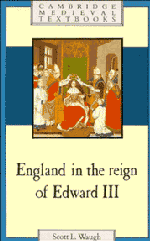Book contents
- Frontmatter
- Contents
- List of figures and tables
- Acknowledgements
- Map 1 Towns and villages mentioned in Chapters 3–6
- Map 2 Ecclesiastical sites mentioned in Chapter 9
- Part I Overview
- Part II Economic challenges
- 3 The peasant family and village society
- 4 Markets and towns
- 5 Overseas trade: wool and taxes
- 6 Economic change
- 7 The landlords' response
- Part III Government and communities
- Part IV Politics
- Glossary
- Bibliography
- Index
7 - The landlords' response
Published online by Cambridge University Press: 05 June 2012
- Frontmatter
- Contents
- List of figures and tables
- Acknowledgements
- Map 1 Towns and villages mentioned in Chapters 3–6
- Map 2 Ecclesiastical sites mentioned in Chapter 9
- Part I Overview
- Part II Economic challenges
- 3 The peasant family and village society
- 4 Markets and towns
- 5 Overseas trade: wool and taxes
- 6 Economic change
- 7 The landlords' response
- Part III Government and communities
- Part IV Politics
- Glossary
- Bibliography
- Index
Summary
Rapidly changing conditions caught lords as well as peasants in their current and forced them to reconsider the management of land and tenants. Although they did not respond uniformly, lords gradually abandoned the direct management of their estates in favour of less risky methods. All the while, they increased the pressure on the peasantry to make up some of their losses, until peasant resentment exploded in the English Rising of 1381.
To understand the landlords' response to changing economic conditions, it is important to have a clear picture of their powers and resources. They controlled the two critical components of an agrarian economy, land and labour, through property rights, legal authority, and economic monopolies. Proprietary authority guaranteed them land to work or lease. Jurisdiction enforced the payment of rents, the performance of services, and the regulation of the lord's tenements. Monopolies such as markets or mills not only produced a small income but supplied necessary services.
These powers were organized with tenants and land into estates, which might consist of lands in a single region or be spread across several counties. Estates sometimes included woods, chases, parks, or warrens, where lords hunted with their friends, as well as castles or residences. Markets, fairs, and towns were integral elements of an estate's resources. The basic sub-unit of the estate was the manor. Though there was no such thing as a ‘typical’ manor, virtually all had three essential components: demesne land held directly by the lord, tenant land held by hereditary free or unfree tenants for rents and/or services, and a court.
- Type
- Chapter
- Information
- England in the Reign of Edward III , pp. 97 - 114Publisher: Cambridge University PressPrint publication year: 1991

